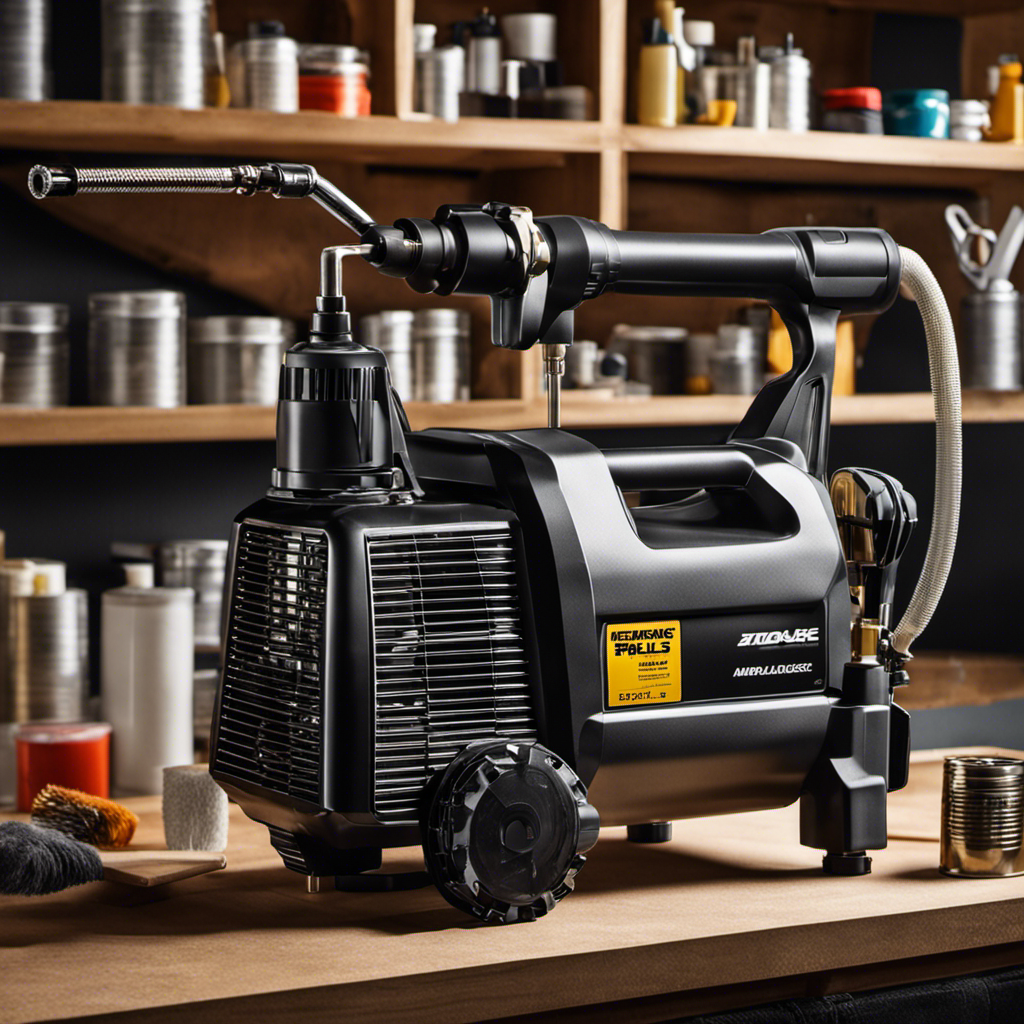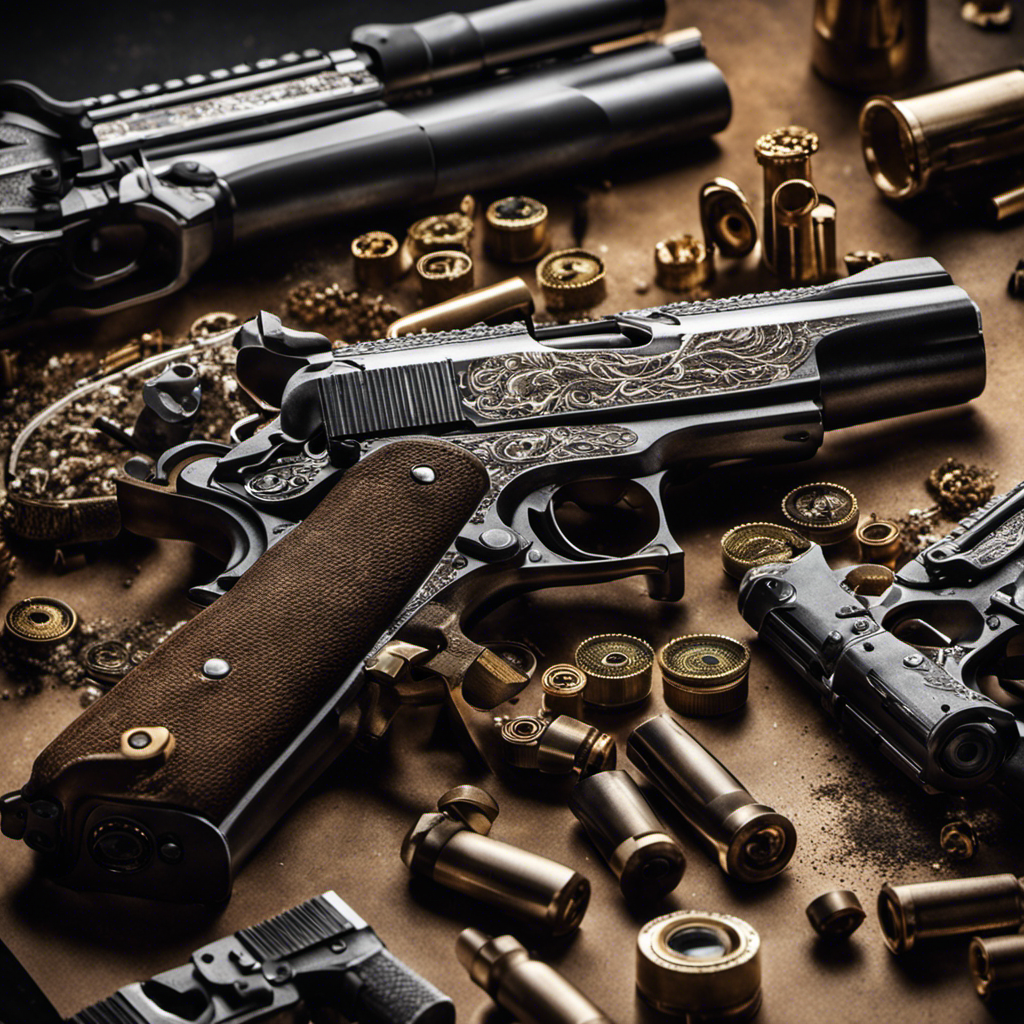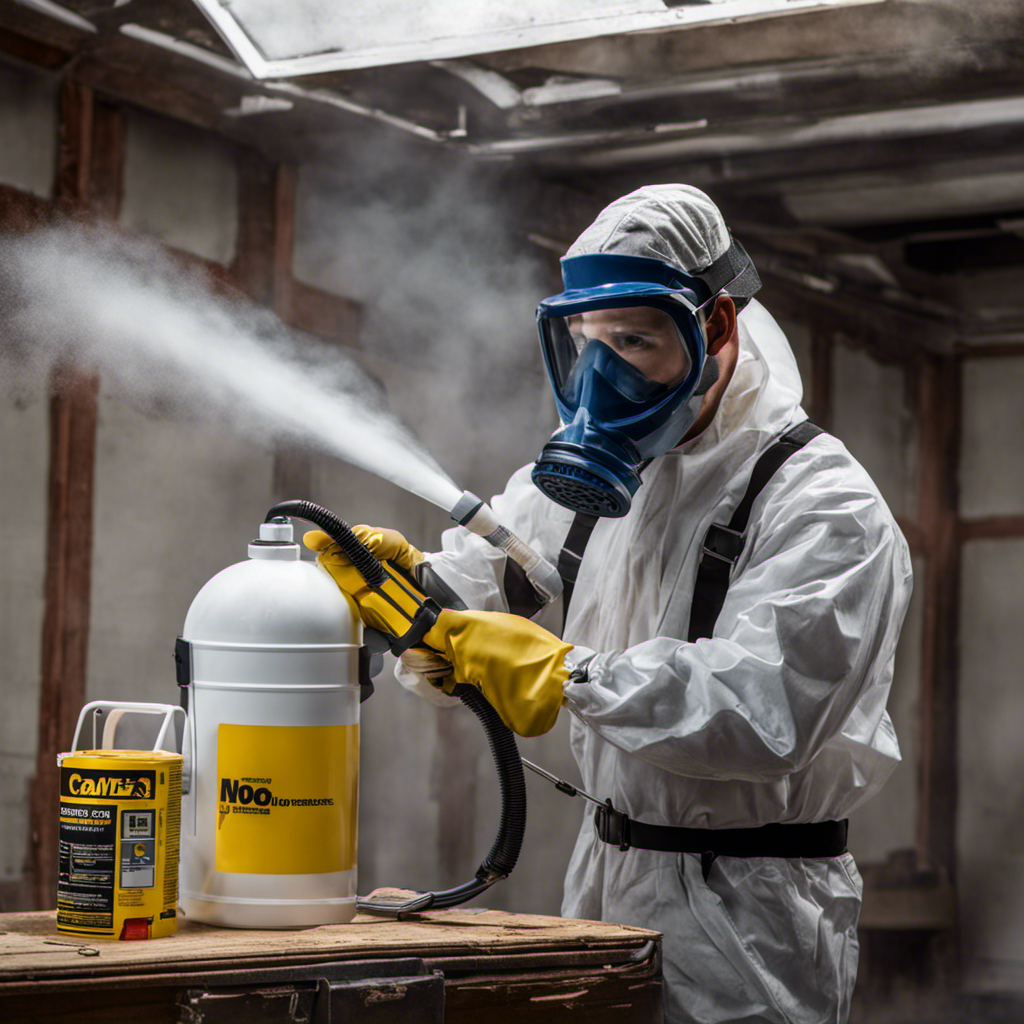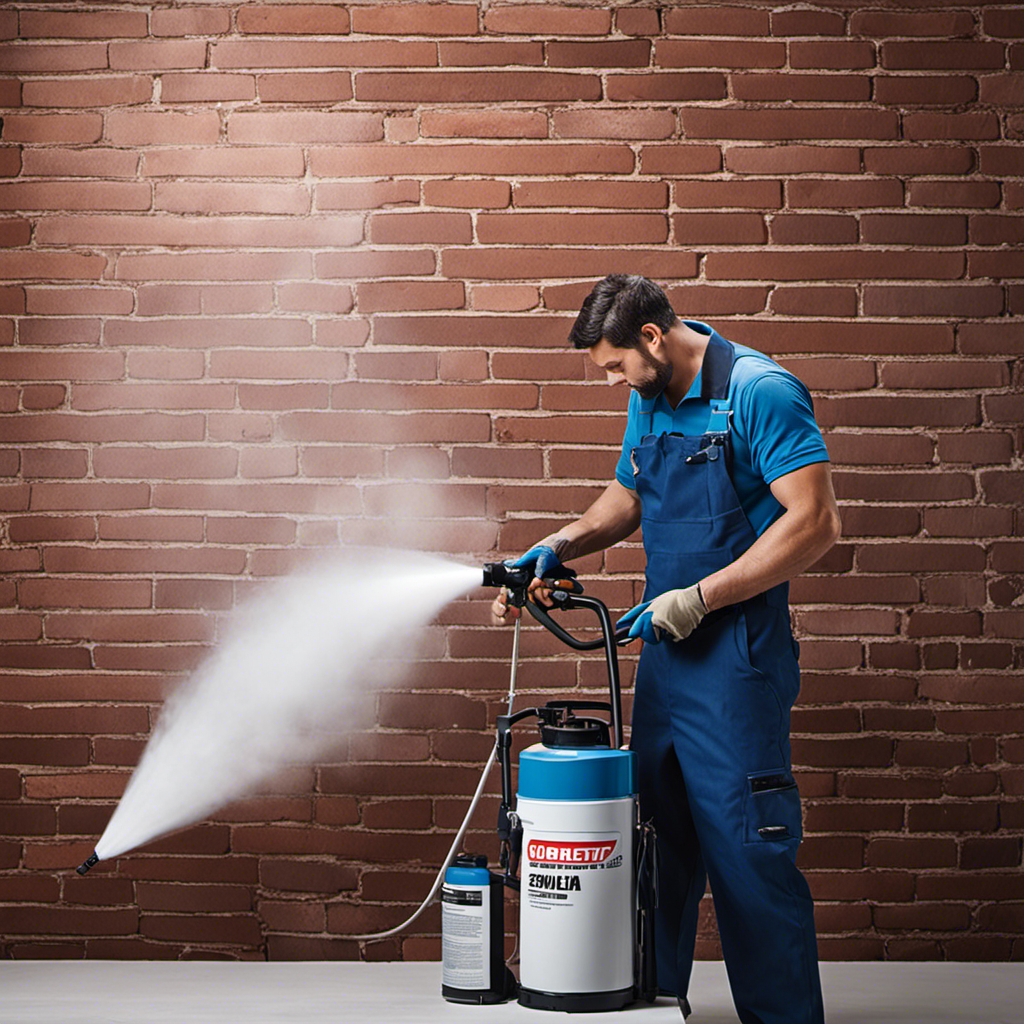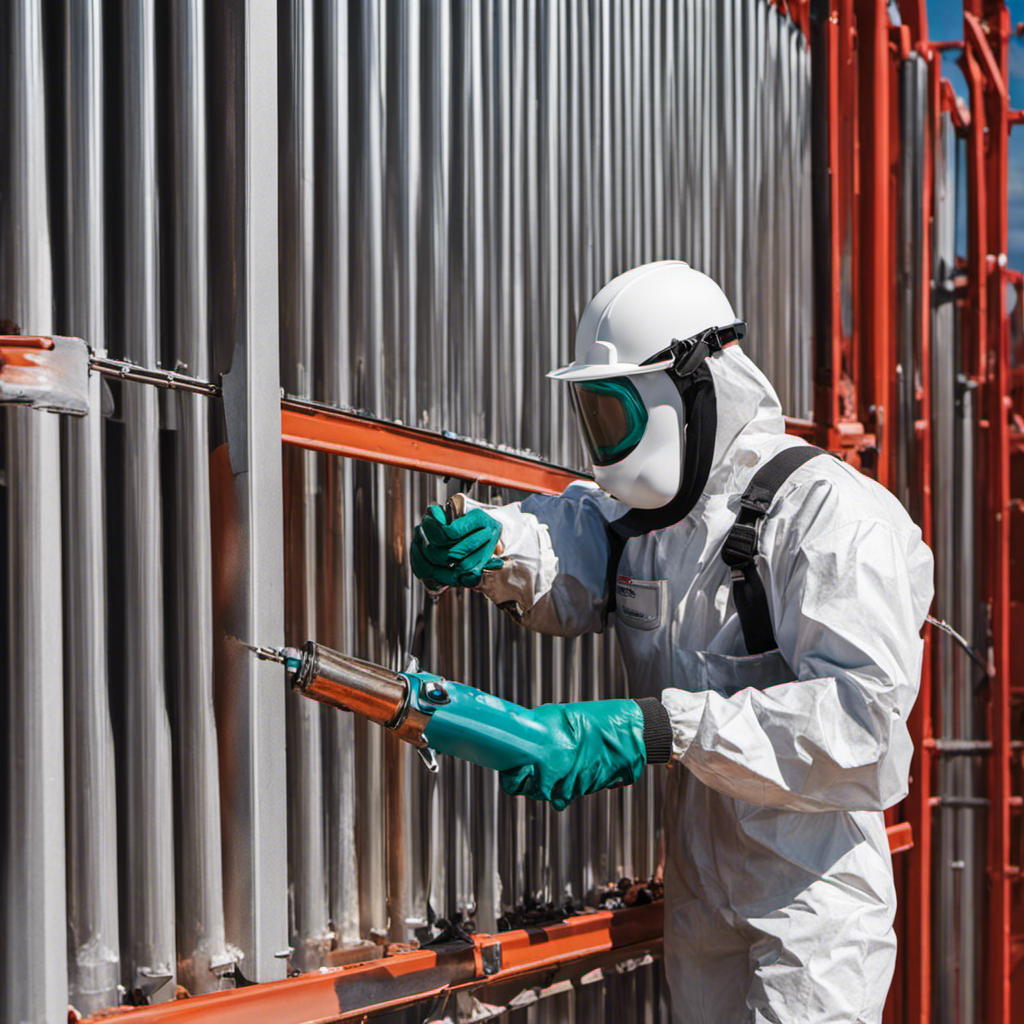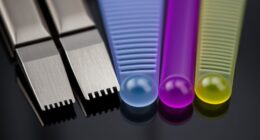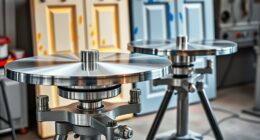Learning how to effectively use an airless paint sprayer is like uncovering a mystical tool that rejuvenates walls. This knowledge transitions novices into the realm of experts, empowering them to achieve impeccable painting results.
With proper setup, maintenance, and techniques, anyone can achieve stunning results. From gathering tools and preparing surfaces to mixing paint and troubleshooting issues, this comprehensive guide covers it all.
So, step into the world of airless paint sprayers and unlock your artistic potential.
Key Takeaways
- Proper preparation and setup are essential for successful airless paint spraying.
- Gathering the necessary tools and materials, selecting suitable paint, and preparing the surface are crucial steps.
- Mixing the paint correctly and priming the pump are important for optimal performance.
- Regular cleaning, maintenance, and proper storage of the sprayer are necessary to ensure its longevity and effectiveness.
Preparation and Setup
The user gathers the necessary tools and materials, prepares the surface for painting, mixes the paint according to instructions, and primes the pump and tests the sprayer.
When setting up an airless paint sprayer, it is important to avoid common mistakes. One common mistake is not properly preparing the surface for painting. This can lead to poor paint adhesion and uneven results.
Another mistake is not choosing the right paint for the project. Different surfaces require different types of paint, and using the wrong type can lead to issues such as peeling or cracking. It is important to carefully read the manufacturer’s instructions and choose a paint that is suitable for the surface and the desired finish.
Gathering Tools and Materials
To gather the necessary tools and materials for painting, one should make a checklist and ensure everything is readily available.
Safety precautions should be a top priority when selecting the right paint. It is essential to choose paint that is non-toxic and labeled as safe for indoor use.
Additionally, consider the specific needs of the surface being painted. For example, exterior surfaces may require paint that is weather-resistant and durable.
When choosing paint, it is also important to consider the desired finish, such as matte or glossy. Taking the time to select the right paint will ensure a successful and long-lasting paint job.
Surface Preparation
Before beginning the painting process, one should ensure that the surface is properly prepared for optimal paint adhesion. Surface protection is crucial in ensuring a long-lasting and durable paint job.
To achieve this, one must first clean the surface thoroughly, removing any dirt, dust, or debris. Next, any loose or peeling paint should be scraped away, and any cracks or holes should be filled and sanded smooth.
Once the surface is clean and smooth, it is important to choose the right paint for the job. Consider factors such as the type of surface being painted, the desired finish, and any specific requirements, such as weather resistance or durability.
Paint Mixing
One should carefully follow the instructions to properly mix the paint for the best application results. Paint mixing is a crucial step in achieving a professional finish.
Common mistakes include not choosing the right paint and additives and not following the recommended mixing ratios for different materials. To achieve the right consistency, it is important to choose the appropriate paint and additives for the project. Consider factors such as the type of surface, desired finish, and environmental conditions.
Mixing ratios vary depending on the type of paint and material being used. It is essential to carefully measure and mix the paint according to the manufacturer’s instructions.
Pump Priming and Testing
The user carefully primes the pump and tests the sprayer to ensure proper functionality before starting the painting process. This step is crucial in airless sprayer troubleshooting, as it allows the user to identify any issues that may affect the quality of the paint application.
Here are some tips for achieving smooth coats with an airless sprayer:
-
Check for clogs or damage to the nozzle: A clogged or damaged nozzle can cause uneven spray patterns. Clean or replace the nozzle if necessary.
-
Adjust pressure settings on the sprayer: Proper pressure settings are essential for achieving a consistent flow of paint. Consult the sprayer’s manual for recommended pressure ranges.
-
Regularly remove and clean filters: Dirty filters can obstruct paint flow and result in sputtering or uneven coats. Clean or replace filters as needed.
-
Test the consistency of the paint and thin if needed: The paint should have a smooth and even consistency. If it is too thick, thin it according to the manufacturer’s instructions.
Cleaning and Maintenance
After each use, it is important for users to clean and maintain their airless sprayer to ensure optimal performance and longevity. Proper sprayer maintenance involves a few key cleaning techniques.
First, users should thoroughly flush out the sprayer with clean water to remove any remaining paint residue. This can be done by running water through the sprayer until it runs clear.
Next, it is important to disassemble the sprayer and clean each individual component, such as the nozzle, filters, and hoses. Users can use a brush or a cleaning solution specifically designed for airless sprayers to remove any clogs or buildup.
Additionally, regular lubrication of moving parts and seals will help prevent wear and tear.
Post-Use Sprayer Cleaning
To ensure optimal performance and longevity, users should promptly clean and maintain their airless sprayers after each use. Proper sprayer maintenance is essential to prevent clogs and ensure the smooth operation of the equipment. Here are some cleaning tips to keep your sprayer in top condition:
| Cleaning Tips | Frequency |
|---|---|
| Flush the system with water | After every use |
| Disassemble and clean filters | Weekly |
| Check and clean the nozzle | After every use |
| Wipe down the exterior | After every use |
| Store in a clean, dry place | After every use |
Troubleshooting Common Issues
Users can troubleshoot common issues with their airless sprayer by checking for clogs or damage to the nozzle, adjusting pressure settings, and regularly removing and cleaning filters.
Sprayer nozzle clogs can occur due to dried paint or debris. Users should inspect the nozzle for any blockage and clear it using a needle or small brush.
Pressure adjustment is crucial for achieving the desired spray pattern and paint flow. Users can increase or decrease the pressure to optimize performance.
Regularly removing and cleaning filters helps prevent clogs and ensures consistent paint flow. Filters should be rinsed with water or cleaning solution and thoroughly dried before reinstallation.
Technique Practice and Improvement
Practicing regularly and experimenting with different nozzle sizes, spray angles, and distances from the surface can help individuals improve their painting technique. By engaging in practice drills, painters can familiarize themselves with the dynamics of the airless paint sprayer and gain better control over their strokes. This allows them to achieve more precise and consistent results.
Additionally, practicing different techniques can help painters troubleshoot any paint flow issues they may encounter. By varying the nozzle size, spray angle, and distance from the surface, they can determine the optimal settings for their specific painting project.
This hands-on approach not only improves their overall technique but also enhances their ability to troubleshoot any potential paint flow problems that may arise.
Troubleshooting Techniques
Regularly checking for clogs or damage to the nozzle, adjusting pressure settings, and regularly cleaning filters are key troubleshooting techniques for optimal performance of the airless paint sprayer.
Clogs or damage to the nozzle can hinder the paint flow and result in uneven coverage. By regularly inspecting the nozzle, any blockages or wear and tear can be detected and addressed promptly.
Additionally, adjusting the pressure settings on the sprayer is crucial for achieving the desired paint flow and atomization. Different surfaces and paints require different pressure settings, so it is important to make the necessary adjustments to ensure an even and smooth application.
Lastly, regularly cleaning the filters prevents any debris or paint particles from clogging the system, ensuring consistent paint flow and preventing potential damage to the sprayer.
Perfecting Painting Technique
To achieve a smooth and even coat, the painter can experiment with different nozzle sizes, spray angles, and distances from the surface.
By adjusting the nozzle size, the painter can control the amount of paint being sprayed, which can help achieve the desired coverage.
Spray angle experimentation is another important factor in achieving smooth coats. The angle at which the paint is sprayed can affect the distribution and consistency of the paint on the surface. By trying out different angles, the painter can find the one that works best for the specific project.
Lastly, the distance from the surface also plays a role in achieving smooth coats. The painter should experiment with different distances to find the optimal range that provides even coverage without overspraying or underspraying.
Frequently Asked Questions
Can I Use an Airless Paint Sprayer for All Types of Paint?
Yes, an airless paint sprayer can be used for all types of paint. However, there are some things to consider.
Water-based paints, oil-based paints, and latex paints are all suitable for airless paint sprayers. These sprayers provide a smooth and even finish, making them ideal for larger surfaces. However, they may not be suitable for delicate or intricate work.
Additionally, thicker paints may require additional thinning to achieve optimal results. Overall, airless paint sprayers offer convenience and efficiency for a variety of paint types.
How Often Should I Clean the Filters on My Airless Paint Sprayer?
Cleaning the filters on an airless paint sprayer is a crucial maintenance task. The cleaning frequency depends on factors such as the type of paint being used and the amount of debris present. Ideally, filters should be cleaned after every use to ensure optimal performance and prevent clogs.
Neglecting filter maintenance can lead to decreased paint flow and uneven application. By regularly cleaning the filters, painters can ensure a smooth and efficient spraying experience.
What Is the Optimal Distance Between the Sprayer and the Surface Being Painted?
The optimal spraying distance between the sprayer and the surface being painted is typically around 12 to 18 inches. This distance allows for the paint to be applied evenly and reduces the risk of overspray.
It is important to consider the type of surface being painted and adjust the distance accordingly. Proper surface preparation, such as cleaning and priming, is also crucial for achieving the best results with an airless paint sprayer.
How Long Does It Typically Take for the Paint to Dry When Using an Airless Paint Sprayer?
The drying time of paint when using an airless paint sprayer can vary depending on several factors.
These include the type of paint being used, the environmental conditions, and the thickness of the paint application.
Generally, paint applied with an airless sprayer dries faster compared to traditional methods.
However, it is important to note that drying time does not necessarily indicate complete paint adhesion.
It is recommended to follow the manufacturer’s guidelines for drying times and allow sufficient time for the paint to fully cure and achieve optimal adhesion.
Are There Any Safety Precautions I Should Take When Using an Airless Paint Sprayer?
When using an airless paint sprayer, there are important safety precautions to keep in mind. It is crucial to wear protective equipment such as goggles, gloves, and a respirator to avoid any potential harm from paint fumes or overspray.
Adequate ventilation is also necessary to prevent the buildup of fumes. Additionally, it is important to have the necessary equipment, such as drop cloths and masking tape, to protect surrounding areas from overspray.
Following these safety measures will ensure a safe and successful painting experience.
Conclusion
In conclusion, mastering the airless paint sprayer is like unlocking a world of endless possibilities. By following the comprehensive guide provided, anyone can achieve professional results with this powerful tool.
Just as a skilled musician can create beautiful melodies with their instrument, a proficient painter can transform any surface with the airless paint sprayer. Remember, practice makes perfect, so keep experimenting and refining your technique.
With the right tools, preparation, and maintenance, you can become a true master of the airless paint sprayer. Happy painting!
Drenched in creativity and armed with a fountain pen, Isolde weaves words as gracefully as a painter strokes their canvas. A writer for Paint Sprayer Zone, her passion for colors, textures, and spaces finds a harmonious blend with her profound knowledge of painting tools and techniques.
Having grown up in a family of artists, Isolde’s tryst with paints began early. While her relatives expressed themselves on canvas, Isolde found her medium in words. She dedicated herself to chronicling the world of painting, understanding the nuances of each tool, and the artistry behind every spritz of a paint sprayer.

